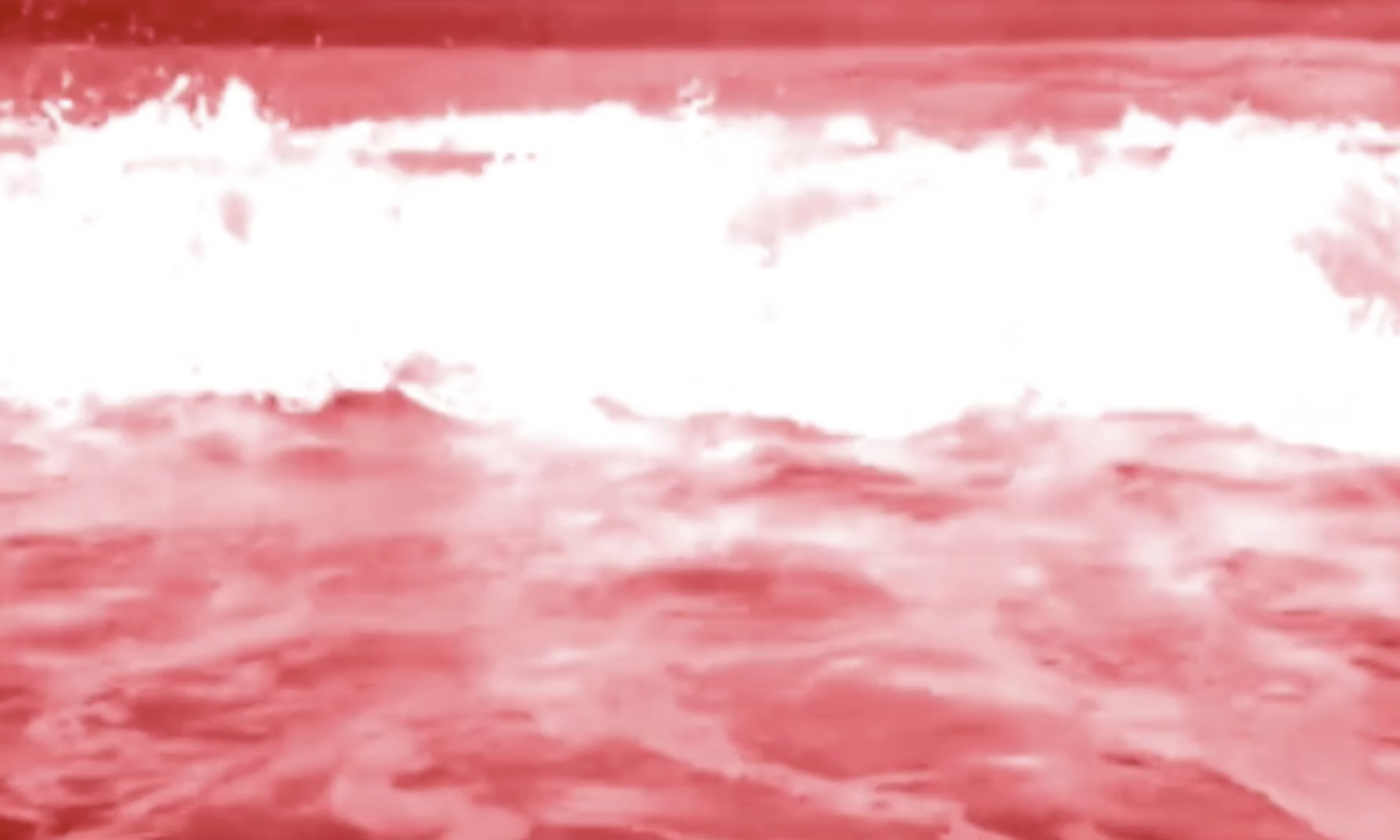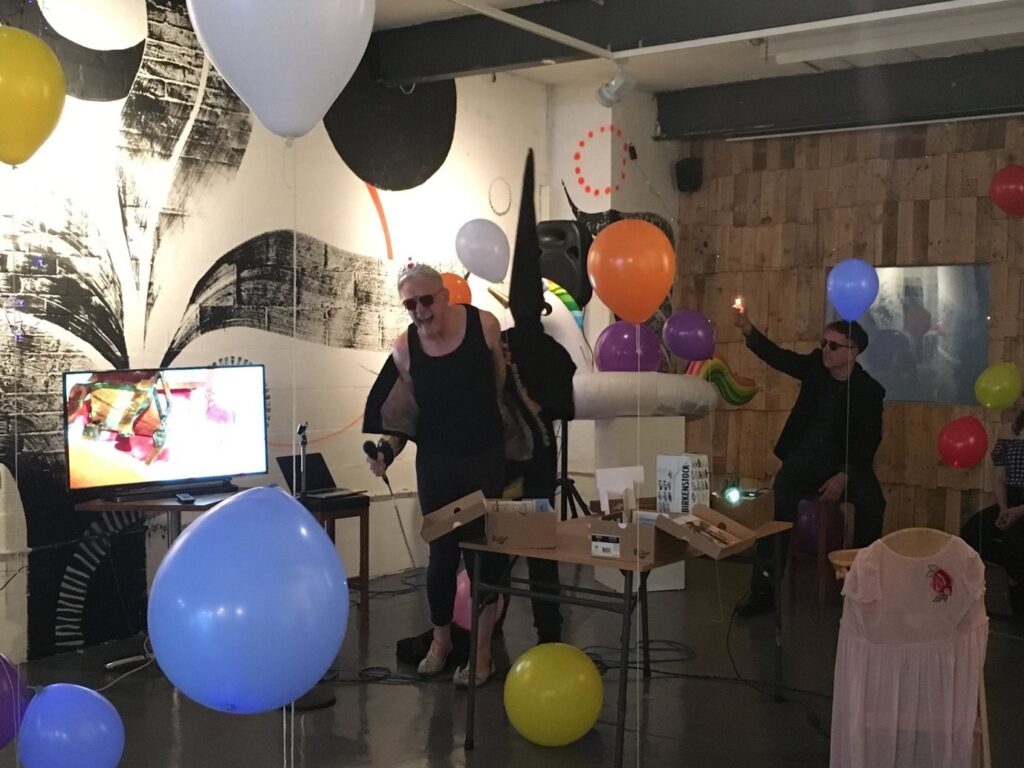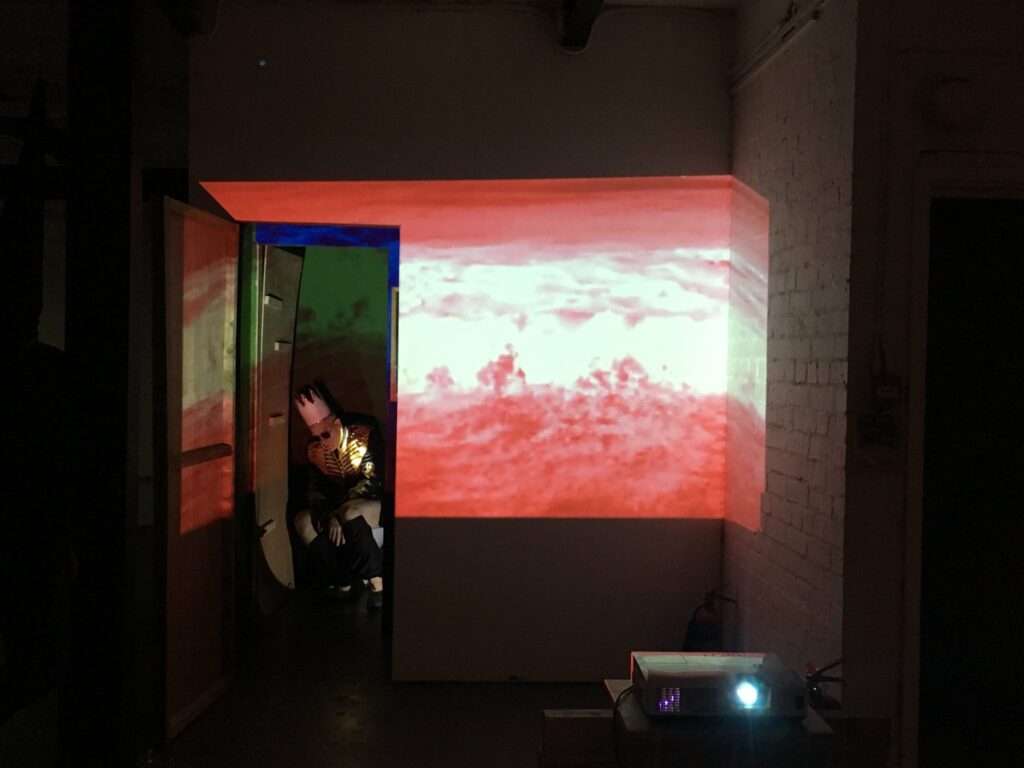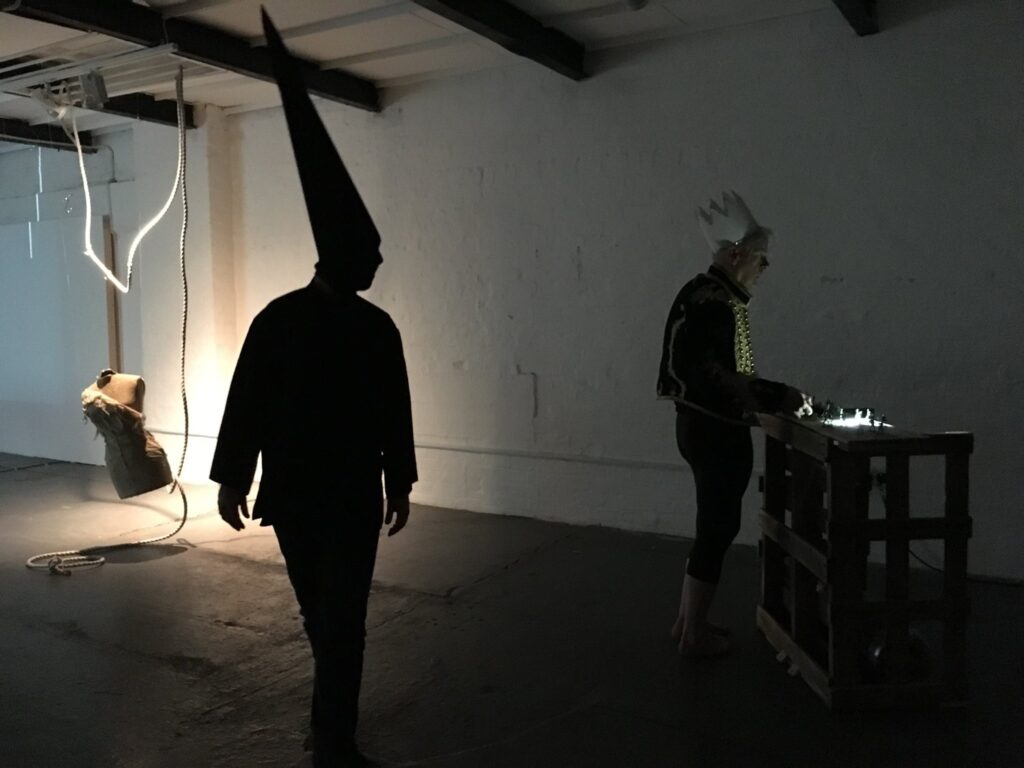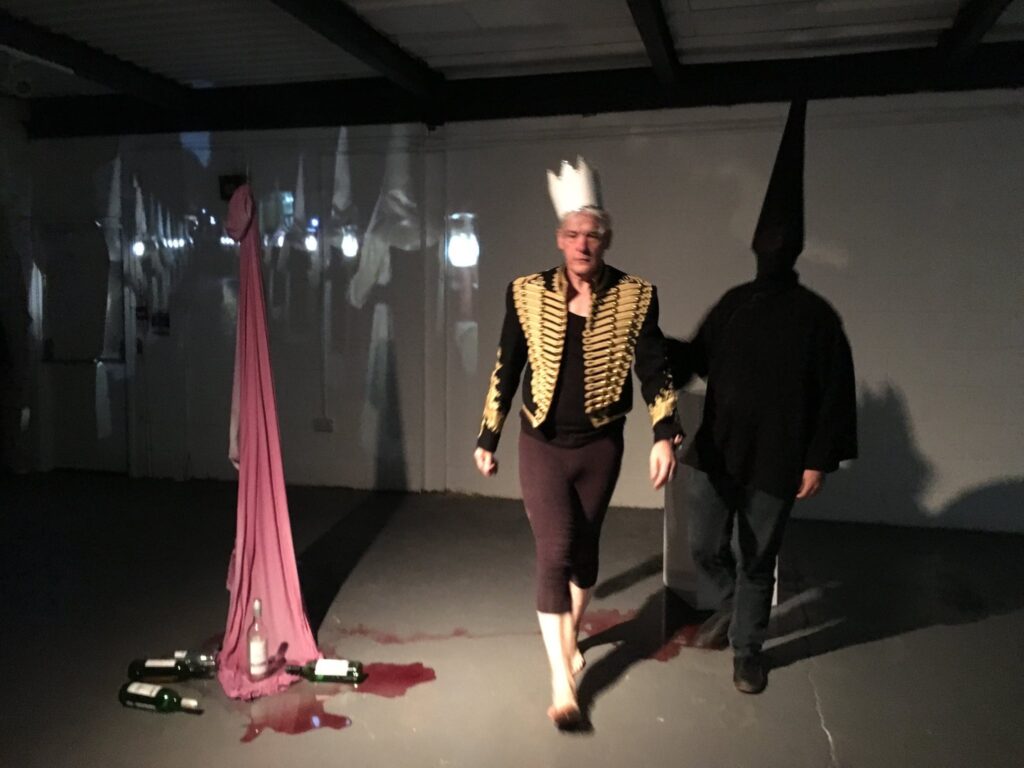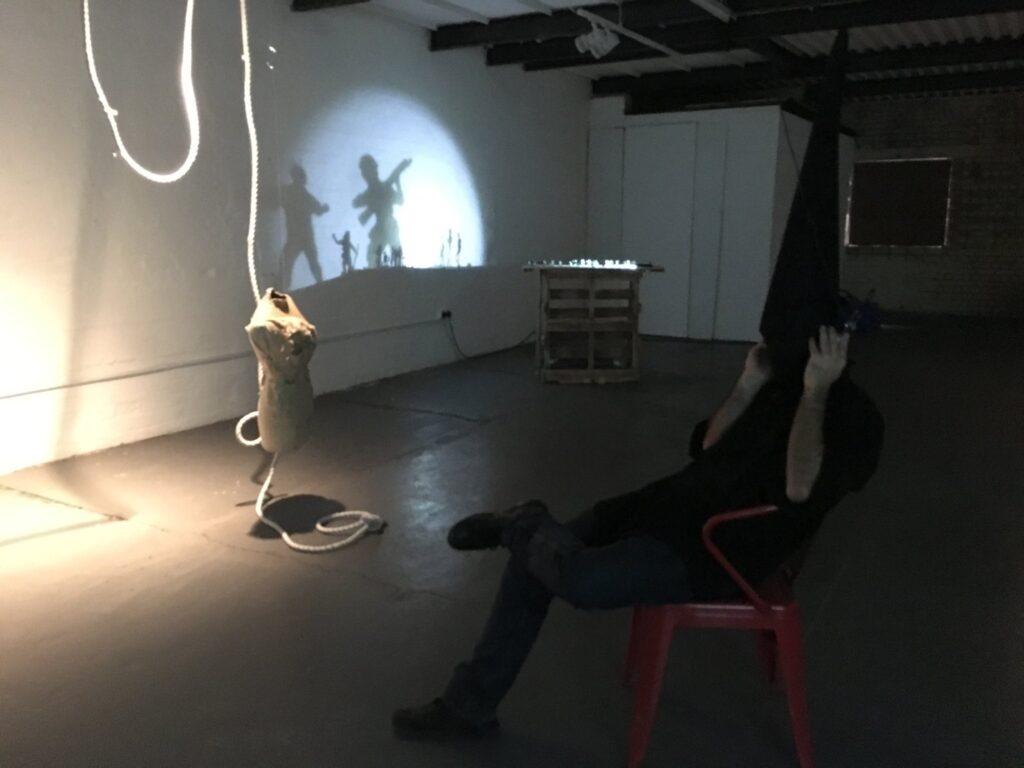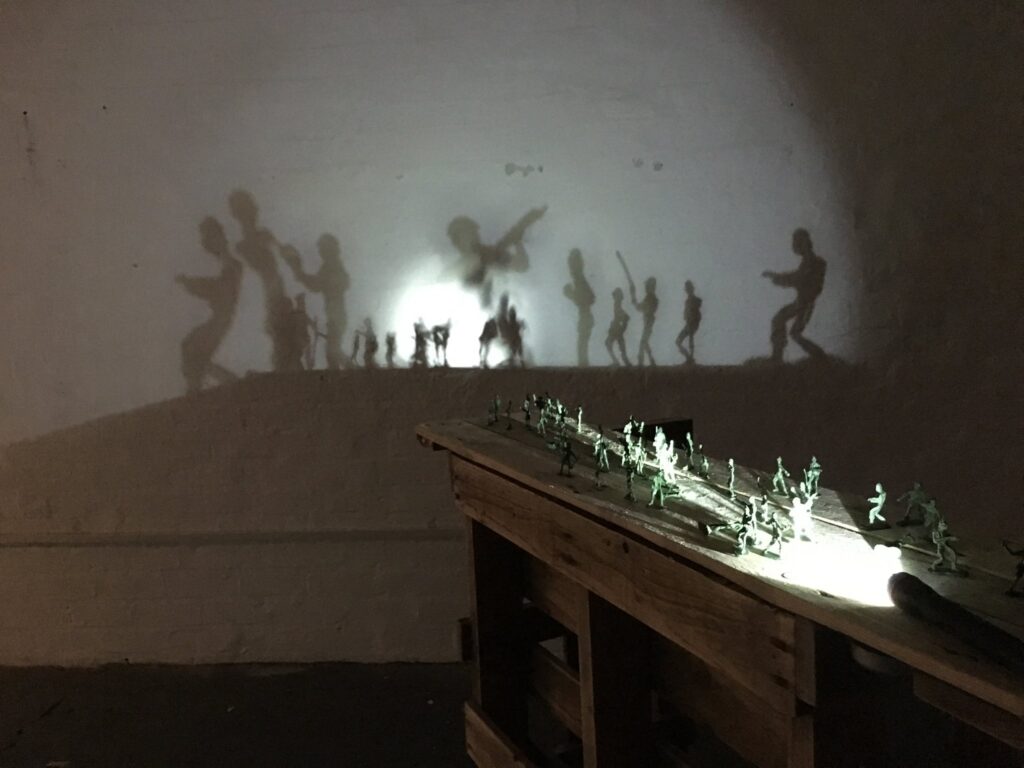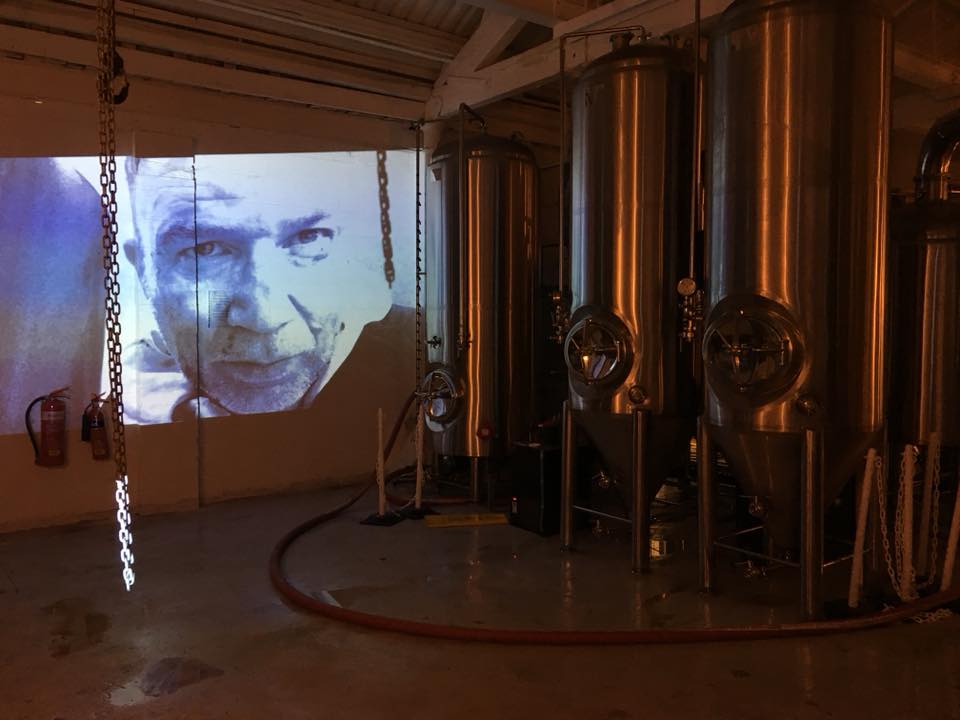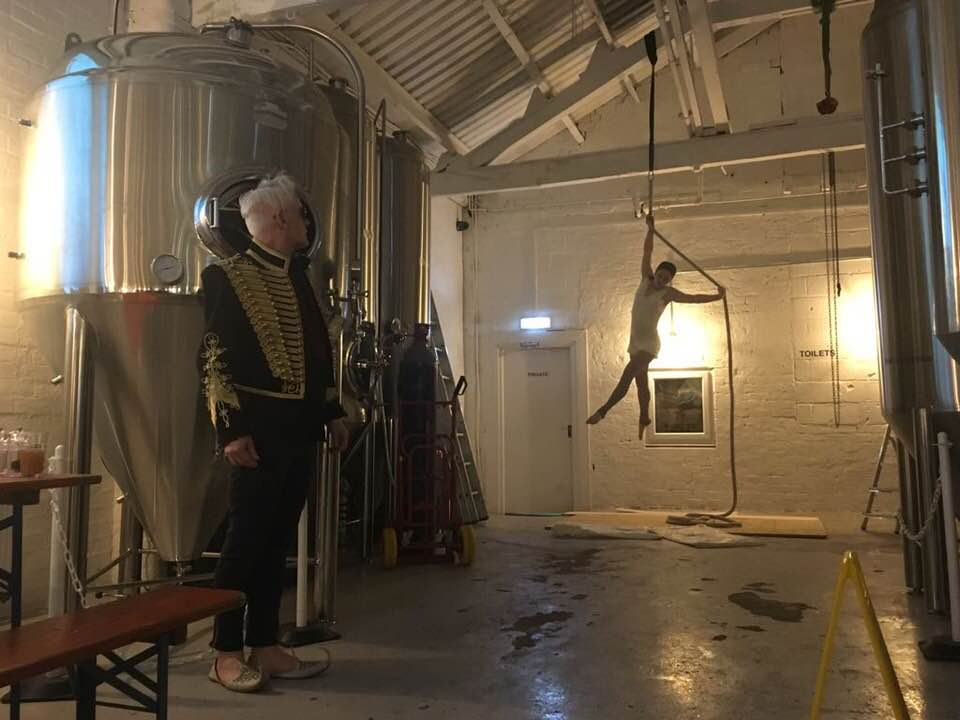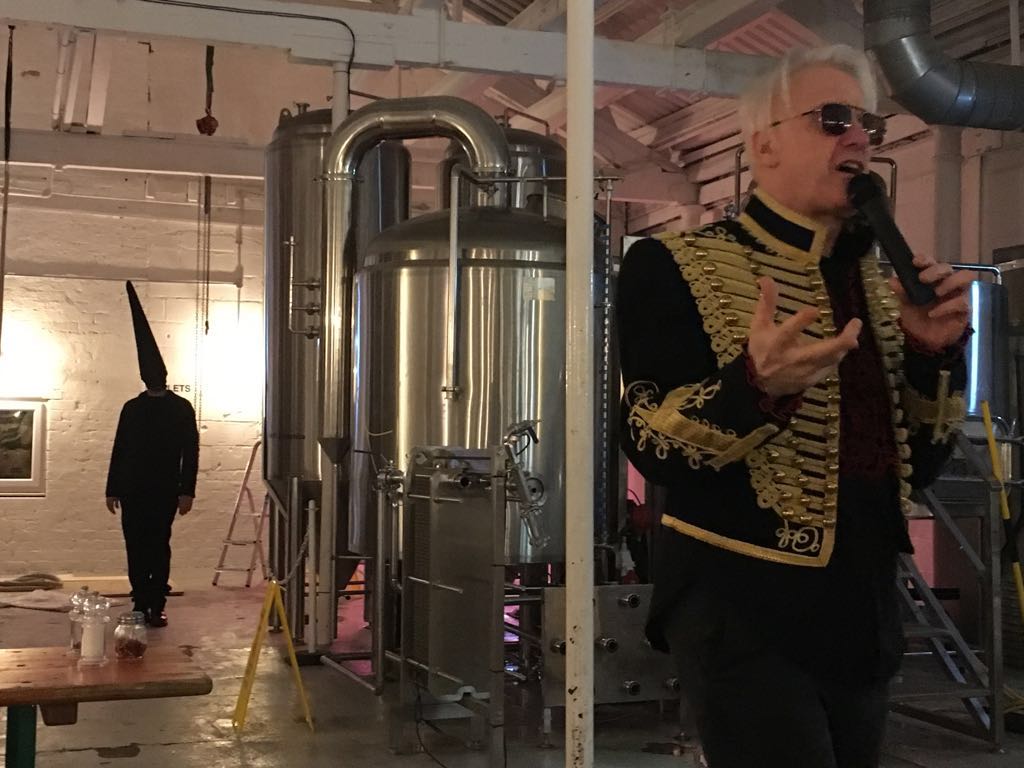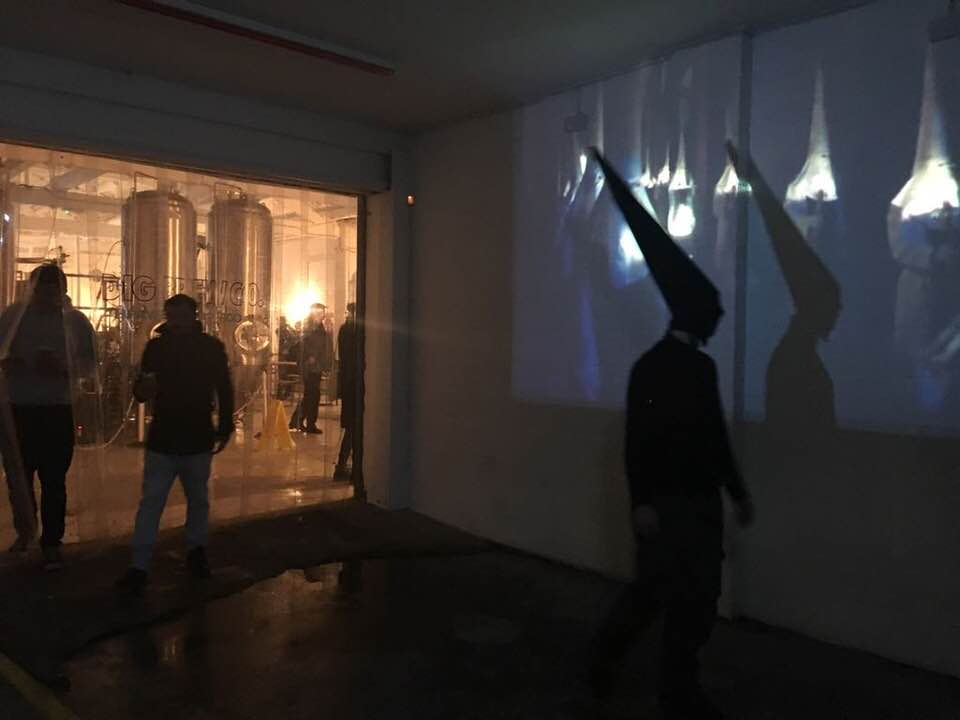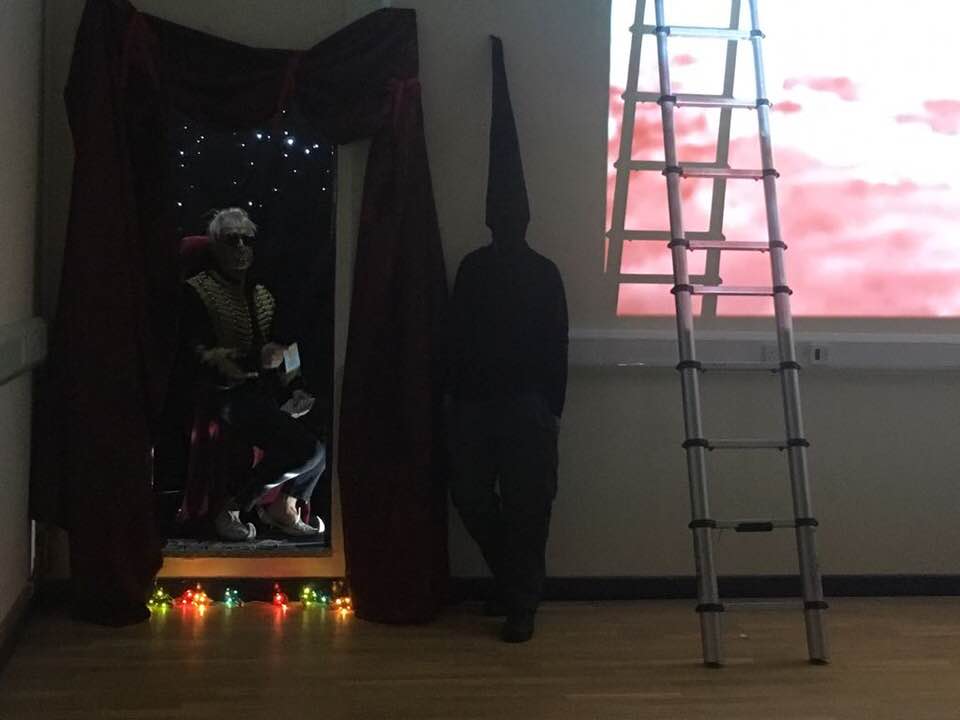Party at Macbeth’s
Date: Phase 1 June 2017 / Phase 2 March 2018
Location: Centrala Arts Centre / Digbrew (Birmingham, UK)
Format: Installation / site-specific performance
Participants: Aleksandar Dundjerovic, Stephen Simms, Daniel Blanco, Maria Sanchez, Jieling Xiao, Hayley Ingle.
Description
In this cycle, the performance space became the focus of the devising process. The performance-focused on a party at Macbeth’s home, a feast, to which the audience is invited to celebrate him becoming king. The second cycle consisted of two different site-specific performances, each adapting to the performance environment and creating very different outcomes: phase one in Centrala and phase two in Digbrew.
Phase 1 was performed at Centrala Arts Centre as part of the Digbeth First Friday Festival, adapting the two floors of the centre to situate a selection of key events taken from the text to create an immersive experience for the audience.
Phase 2 adapted Macbeth to the spatial narrative of Digbrew (a brewery in Digbeth, Birmingham) which was integrated into Macbeth‘s performance. We not only brought the spatial configuration of the brewery to the dramaturgy of the narrative, but also all its sensorial and immersive audience experience; wooden table where they were seated, temperature and the strong smell scape (smell of yeast and beer fermentation).
Research enquiry
How can a dramatic text be presented as spatial experience? How can the methods of installation and visual arts enhance the immersive experience of theatre?
Research Background
In Macbeth Projeto, the space was an active element in the devising process. We were able to observe how the conflicts shaped the piece or perhaps, as Pearson says, we achieved “studied indifference.” In other words, in both spaces – Centrala and Digbrew – it seemed as if the piece had been created for that particular space, not just superposed to an existing reality.
In this cycle, the architecture where the dramatic action took place became an essential element of the performance. The architect Bernard Tschumi defines this interaction when “architectural spaces and programs can become totally interdependent and fully condition each other’s existence” (Tschumi, B., 1996:129). The interdependence between the site and the dramaturgy of Macbeth emerged during the devising process.
In the process of investigation of the location where the dramatic action is situated, we examined theatrical space, which has proved to be essential in contemporary performance practices (MacAuley, 2000). In his book Postdramatic Theatre, Lehmann (1999) highlighted the importance of space in the dramaturgical process. Lepage’s work in the 1990s was characterised by the use of mixed media on stage, with spatiality becoming the main element (Dundjerovic, 2009:19). The practice of using non-theatrical spaces by companies such as Shunt and Punchdrunk has pointed to the use of sites and architectural spaces as part of the play’s dramaturgy or performative event. Mike Pearson presented this use of space in the study Site-Specific Performance (2010).
Spaces have their own memories that are kept within them. These memories have an impact on the future events that take place inside them. The existing link between memories and spaces occurs through two processes: the first one occurs when the spaces are designed to host specific actions. The clearest example of this is the Greek civic space, where spaces, such as the theatre are designed based on the rituals that generate them, as in Richard Schechner’s definition: “rituals are collective memories encoded into actions” (Schechner, 2002:52). The second process takes place through the creation of collective memories in space – usually through events or festivals that are transmitted from one generation to another.
Methodology: Interferences with the genius loci
In this cycle, we worked in the spaces of Centrala and Digbrew using a site-specific methodology. In the phase staged in Centrala, the objective was to present a fragmented narrative of Macbeth, gathering images and ritualistic sequences that emerged from the text to create a spatial dramaturgy. This dramaturgy, which had strong visual elements, spatial narratives and objects was presented at Centrala, a space with an industrial character. The piece did not have much text; on the contrary, it sought to present the stories contained in Macbeth through perception and body exploration. The text migrated into an art installation.
In the case of Digbrew, its materiality, the smell of beer, the presence of the silver tanks and the sound, constituted such a powerful atmosphere that we could not ignore it. The performance space was materialized, not just through the objective space, but through the concept that generated the whole environment. A brewery is an industrial space with its own spatial, programmatic needs. We superposed a narrative of Macbeth onto this space and, in this way, we articulated a dialogue between the brewing process and our dramaturgy.
Research outcomes and evaluation:
Phase 1 was an arts event and an installation. Phase 2 was a site-specific performance.
This cycle established the foundations of a paper presented at IFTR (International Federation of Theatre Research). Cycle 2 gave us the opportunity of experimenting with space, understanding how each of the fragments of Macbeth had their own spatial identity. After fragmenting the text and creating audience experiences through different spatial environments (installations), we conceptualized the role of each of the images in the space and how each of them created a perception on the audience. In the evaluation of cycle two, we were able to synthesize the experiences created in the different spatial environments in order to bring them back together in a traditional theatre space in cycle three, finding equivalents and analogies. The experience led us to a solo -performance – cycle three, where Macbeth and Lady Macbeth are protagonists as a married couple Mac and Beth and expectation they had form each other, particularly failed ambition and dreams of Lady Macbeth.
References
Dundjerovic , A. ( 2009 ). Robert Lepage . Oxon, UK : Routledge .
Lehmann , H.- T. ( 2006 ). Postdramatic Theatre . Translated by K. Jurs- Munby . Edición,
new ed. Abingdon, England, New York : Routledge .
MacAuley , G. ( 2000 ). Space in Performance: Making Meaning in the Theatre . Reprint
ed. Ann Arbor : University of Michigan Press .
Martinez Sanchez, MJ. (2020) Dynamic Cartography: Body, Architecture and Performative Space. Abingdon, UK: Routledge.
Pearson , P.M. ( 2010 ). Site- Specific Performance . Houndmills, Basingstoke, Hampshire,
New York : Palgrave Macmillan .
Schechner , R. ( 2002 ). Performance Studies: An Introduction . Oxon, UK : Routledge .
Tschumi , B. ( 1996 ). Architecture and Disjunction . Cambridge, MA : MIT Press .
